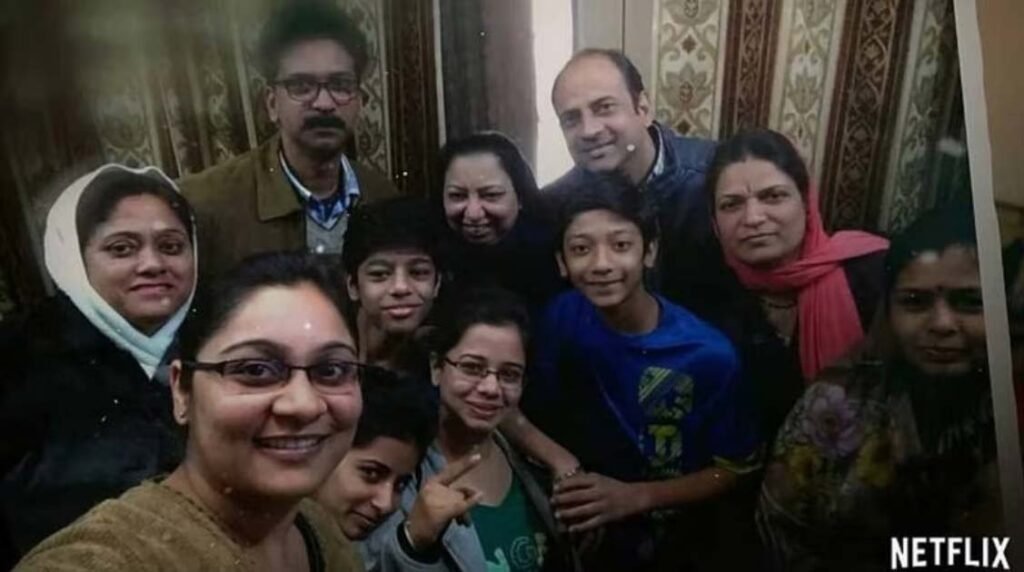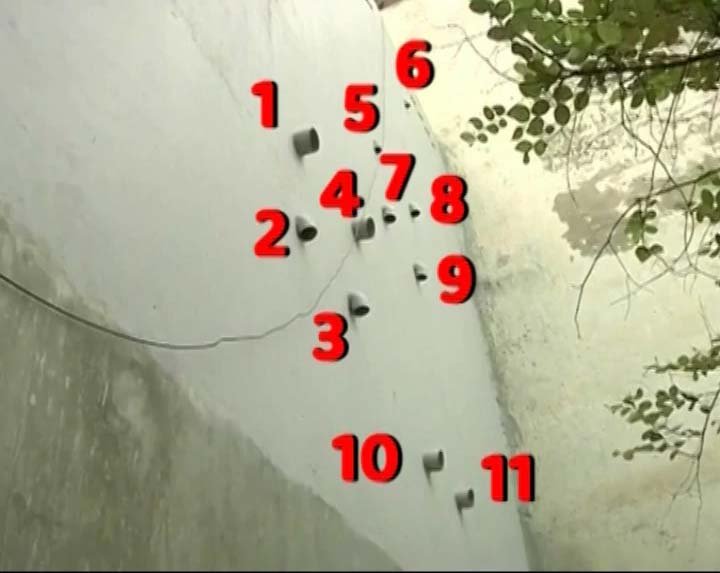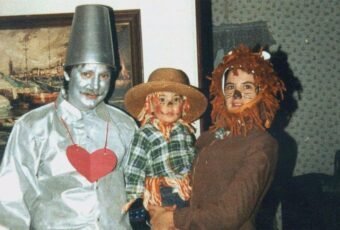In the bustling neighborhood of Burari, Delhi, stands a house that whispers tales of a chilling mystery. It’s an ordinary building, three stories high, nestled amidst the everyday hustle and bustle of the city. Yet, it holds a story that has left an indelible mark on the nation’s psyche. This is the house where the Chundawat family, eleven members strong, met a tragic end in what has come to be known as the Burari deaths.

The Chundawat Family: A Portrait of Normalcy
The Chundawats, known locally as the Bhatia family, was a picture of normalcy in their Burari neighborhood. The family was led by Narayani Devi, the matriarch, who lived with her two sons, Bhavnesh and Lalit, and their families. Bhavnesh, the elder son, ran a successful grocery shop on the ground floor of their house. Lalit, the younger son, was known for his deep spirituality, a trait that would later play a significant role in the family’s tragic end.
The family also included Bhavnesh’s wife Savita and their three children, Neetu, Monu, and Dhruv. Lalit’s wife Tina and their 15-year-old son Shivam were also part of the household. Pratibha, Narayani Devi’s widowed daughter, lived with them along with her daughter Priyanka, who had recently gotten engaged. The family was well-respected in the community, known for their hard work, generosity, and strong bond.
A neighbor said, “They were a happy family. We never thought something like this could happen.”
The Unraveling: A Descent into Shared Delusion
Despite their outward appearance of normalcy, the Chundawat family was spiraling into a shared delusion, led by Lalit. After surviving a serious accident, Lalit claimed to be in communication with his deceased father’s spirit. He convinced his family that he was receiving divine instructions through these communications, leading them down a path of increasingly bizarre rituals aimed at attaining salvation.
The family’s descent into shared delusion was meticulously documented in a set of 11 diaries, which were discovered after the tragedy. The diaries, mostly written by Lalit and Priyanka, detailed the rituals and practices the family had been following, culminating in the “Banyan Tree Ritual” that led to their deaths.
The Tragic End: A Ritual Gone Wrong
On the night of June 30, 2018, the Chundawat family performed the final ritual that they believed would lead them to salvation. The next morning, they were found dead in their home. Ten members of the family were found hanging in the courtyard, their hands and feet bound, their eyes blindfolded. Narayani Devi was found dead in another room. The police ruled it a mass suicide, a ritual gone horribly wrong.
“It was a sight that can haunt you for the rest of your life,” a police officer, who wished to remain anonymous, recalled.
The 11 family members who died were Narayan Devi (77), her two sons Bhavnesh (50) and Lalit (45), their wives Savita (48) and Tina (42), respectively, and their children Neetu (25), Monu (23), Dhruv (15), Shivam (15), Meenu (23), and Priyanka (33)
The Aftermath: A Haunting Legacy
The Burari deaths left a haunting legacy, serving as a chilling reminder of the dangers of untreated mental illnesses and shared delusions. The surviving family members refused to accept the police’s conclusion of mass suicide, seeking further investigation into the case. However, their pleas were dismissed by the Delhi High Court, which upheld the police’s conclusion.

“The court’s decision was a blow to us. We still believe that our loved ones were murdered,” a surviving family member, who wished to remain anonymous, said.
The tragedy of the Chundawat family has been explored in a Netflix documentary, which delves deeper into the case and the shared psychosis that led to their tragic end. The documentary, along with the widespread media coverage of the case, has sparked
discussions about mental health awareness in India, underscoring the importance of seeking professional help for mental health issues.
In the end, the Burari deaths remain a haunting tale of a family driven to a horrific end by their shared delusions, a tale that continues to send chills down the spine of a nation. The memory of the Chundawat family serves as a grim reminder of the importance of mental health awareness and the need for open dialogue about mental health issues in our society.
“The Burari case is a wake-up call for all of us. We need to take mental health issues seriously and seek professional help when needed,” said Dr. Rajesh Sagar, a professor of psychiatry at the All India Institute of Medical Sciences.
The Burari house, once a symbol of an unspeakable tragedy, is now a grim reminder of the thin line between faith and fanaticism. The walls, once adorned with eleven pipes in a bizarre, irregular manner, still bear the marks of their removal. The pipes, disconnected from any water inlet or outlet, were rumored to be channels for the spirits of the deceased, a theory debunked by the family’s carpenter, Ahmed Ali.
The Mystery of 11 Pipes
Adding to the enigma of the Burari deaths was the discovery of 11 pipes protruding from one of the walls of the house. The pipes, which were not connected to any water inlet or outlet, were positioned in the same pattern in which the bodies were found – ten hanging from the ceiling in one room and one on the floor in another room. The arrangement of the pipes, based on the age and gender of the deceased, further deepened the mystery. The grandmother’s pipe was at the top, the two grandsons’ pipes were at the bottom, and the rest were in the middle.

The peculiar positioning and the number of pipes led to numerous theories and speculations. Some believed that the pipes were a symbolic representation of the family members and were part of the ritual that led to their deaths. Others speculated that the pipes were channels for the spirits of the deceased, a theory that was later debunked.
The autopsy report revealed that the cause of death for all the family members was hanging, supporting the police’s theory of mass suicide. The family, driven by their shared delusion, had believed that performing the ritual would lead them to ‘salvation’. The presence of the pipes, their arrangement, and the cryptic entries in the diaries found in the house all seemed to support this theory.
The Unanswered Questions
The tale of the Burari deaths is a chilling reminder of the mysteries that lurk in the corners of our everyday lives. It’s a story that continues to haunt the nation, a grim enigma that may never be fully unraveled. As the house in Burari fights its horror tag, the memory of the Chundawat family lingers on, a chilling echo of a night that shook a nation.
What led the Chundawats to their tragic end? Was it a case of mass hysteria, a ritual gone wrong, or something else entirely? The answers remain as elusive as the spirits the Chundawats were believed to be channeling. The diaries found in the house, filled with cryptic entries about “attaining salvation” and “thanksgiving rituals”, only add to the mystery.
“The Burari case is a mystery that may never be fully solved. But it serves as a stark reminder of the power of belief and the lengths to which people will go in their quest for spiritual salvation,” said Dr. Sudhir Gupta, head of the forensic department at the All India Institute of Medical Sciences.
The Burari deaths have left an indelible mark on the community. Neighbors still speak of an eerie sensation when passing the house, and the area has been drawing visitors eager to see the “horror house”. Yet, life goes on. The house, once a symbol of an unspeakable tragedy, is slowly regaining its place as just another building in the bustling neighborhood of Burari.
The story of the Chundawat family serves as a chilling reminder of the power of belief and the lengths to which people will go in their quest for spiritual salvation. It’s a tale that will continue to haunt the collective memory of a nation, a grim testament to a tragedy that shook a city and shocked a country. As the house in Burari fights to shed its horror tag, the memory of the Chundawat family lingers on, a chilling echo of a night that will forever remain etched in the annals of India’s most chilling mysteries.
Read more from the website –










